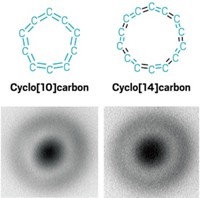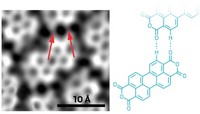Advertisement
Grab your lab coat. Let's get started
Welcome!
Welcome!
Create an account below to get 6 C&EN articles per month, receive newsletters and more - all free.
It seems this is your first time logging in online. Please enter the following information to continue.
As an ACS member you automatically get access to this site. All we need is few more details to create your reading experience.
Not you? Sign in with a different account.
Not you? Sign in with a different account.
ERROR 1
ERROR 1
ERROR 2
ERROR 2
ERROR 2
ERROR 2
ERROR 2
Password and Confirm password must match.
If you have an ACS member number, please enter it here so we can link this account to your membership. (optional)
ERROR 2
ACS values your privacy. By submitting your information, you are gaining access to C&EN and subscribing to our weekly newsletter. We use the information you provide to make your reading experience better, and we will never sell your data to third party members.
Analytical Chemistry
Bond Order Via Microscopy
Molecular Bonding: Method probes subtle differences in classic chemistry descriptor
by Mitch Jacoby
September 17, 2012
| A version of this story appeared in
Volume 90, Issue 38

A scanning-probe microscopy method can reveal subtle bond order differences between individual bonds in single organic molecules, according to a study led by researchers at IBM and published in Science (DOI: 10.1126/science.1225621). The advance may enable scientists to map single-bond electron distributions at key circuit junctions in future molecular electronic devices. The work may also deepen understanding of electron transport processes and chemical reactivity in thin films.
Bond order is a classic chemistry concept that’s useful for describing bonding differences between atoms in molecules. The order of the C–C bond in ethylene, for example, is 2, and in ethane it’s 1. That difference reflects the increased electron density and shorter length of C–C double bonds relative to single ones. For the simplest conjugated molecule, benzene, bond order is 1.5, between single and double bonds.
Knowing the bond order in more complex molecules, such as fullerenes and polycyclic aromatic hydrocarbons (PAHs), can help predict geometry, aromaticity, reactivity, and other molecular properties. Bond order in fullerenes, which are made up of fused hexagons and pentagons, can fall anywhere between single- and double-bond values. Bond length, which is related to bond order, can be measured in some cases by using diffraction methods, but that approach yields values averaged over large numbers of molecules.
The new study, led by Leo Gross, Fabian Mohn, and coworkers at IBM’s Zurich research center, shows that scanning microscopy can now be used to directly measure the small differences in electronic charge distribution and bond length associated with bond order variations. The team, which also includes researchers based in Spain and France, made the measurements using an atomic force microscopy (AFM) instrument with a CO-functionalized metal tip operating in a noncontact mode.

In one case, they probed bonds in C60 that fuse two hexagons and a hexagon and a pentagon. The bond joining the hexagons is known to be slightly electron-rich relative to the other bond. The imaging results underscored that subtle difference: The bond fusing the C6 rings appeared shorter and brighter than the bond joining C6 to C5.
The group also probed two PAHs that feature a variety of bonding configurations with corresponding bond order variations. In one case, they examined bonding in hexabenzocoronene, a molecule with a central C6 ring surrounded symmetrically by other C6 rings. Theoretical analysis shows that bonds within the central ring are of slightly higher bond order than bonds connecting the central ring to the outside rings. The team reports that those subtle differences were captured directly by the AFM method. They obtained similar results for a complex PAH made up of nine six-membered rings.
Noting that recent AFM developments have made atomic-scale imaging possible for many types of materials, Rubén Pérez, a professor of condensed matter physics at the Autonomous University of Madrid, comments that the new study “pushes the imaging capability of AFM still further.” The technique was applied to PAHs and fullerenes. But in principle, he says, by customizing the molecule used to functionalize the microscope tip, the technique could be applied to a wide variety of systems.





Join the conversation
Contact the reporter
Submit a Letter to the Editor for publication
Engage with us on Twitter